For new turkey hunters, the sport can be hard to fully understand. Turkeys have some of the keenest senses of all animals and can be difficult to hunt. So, many hunters take to the internet to learn as much as they can for the upcoming season. Sadly, it is pretty easy to find false information that is widely accepted by less involved hunters. To combat this, I have put together a list of the 20 most common turkey hunting myths and answered whether or not they are true. After realizing the truth about these myths, hopefully, you can use them to your advantage and become a better hunter.
20 Turkey hunting Myths
1| Roosted Gobblers Guarantee Harvest
If there is one thing that is 100% certain in hunting, it is that nothing is ever 100% certain in hunting. If you managed to follow a gobbler up to his roost in the evening, it is a good idea to go back in after him the next morning. Good ideas are not always successful ideas. Turkeys move around in the night, so your gobbler may tap the tree. He could move a couple trees over(or not move at all), which would not affect you, or move miles away. So go back in and wait for him to come down from roost for a legal harvest. However, you should also be aware that your turkey may not be where you left him.
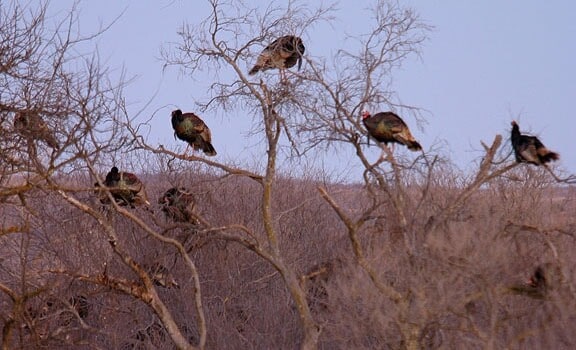
2| Turkeys Do Not Like Rain
Rain reduces visibility and hearing abilities in the woods. When it rains, turkeys do not really mind the water. Actually, it could make turkeys easier to hunt. During a rainy day, turkeys are more likely to go out into fields. If they stay in the woods with reduced visibility and hearing, predators could make a quick dinner out of them. With that being said, this can be a great opportunity for you to hunt them from a field. Do not blindly go set up in a field just because it is raining though. Make sure you scout it beforehand, look for things like scratching and droppings. If a field does not look promising with turkey sign, rain or not, you will not see turkeys there regularly.
3| One Type of Call Is Enough
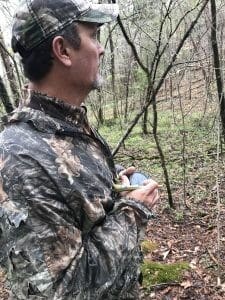
While calling is not everything, having an array of possibilities is a good strategy to have. Especially if you use a pot and striker($15.95 Amazon). Simply using a different striker on your pot can make a totally different sounding call. Anything you can do to make different noises will help when you learn which situations call for each sound. You can also try bringing different types of calls as well. Amazon has a nice package with a pot and striker, mouth call, diaphragm call and box call for $34.99.
4| Turkeys Will Not Go Up-hill
Whether you have heard of it or not, some hunters are convinced that you cannot call a turkey if it is downhill from you. For some reason or another, a few hunters believe that turkeys will not go uphill. This is just not true, it is possibly an excuse for their poor calling skills. If you are on the bottom side of the hill, this position may be unfavorable because the turkey has the high ground and better visual of you, but that does not mean it cannot be done. When possible, chase turkeys on flat grounds for the greatest advantage.
5| Fall Toms Do Not Strut Or Gobble
This is one of the most common turkey hunting myths. A seasoned deer hunter will tell you, in the fall you can definitely hear turkeys gobble. I have heard and seen plenty of turkeys from the deer stand. While turkey gobbling or strutting is not near as constant in the fall as it is in the spring, it definitely happens and you can absolutely use it to your advantage. Also, be on the lookout for so-called “super jakes”. These are jakes that are not quite two years old but have made it through two springs. They are especially eager to start strutting in the fall.
6| High-Heading Is a Spooked Bird
If you have been turkey hunting and have gotten “rubbernecked” you knew you were busted. You can only hope that you somehow fool the turkeys’ keen eyesight. High-heading looks very similar to rubbernecking. These two separate actions tell two different stories. If you have a group of toms high-heading, they are most likely competing with one another to look larger in front of a hen. If there are no hens in sight, stay still and check the entrances around you, there is likely a hen or two coming your way.

7| Only Toms Have Beards
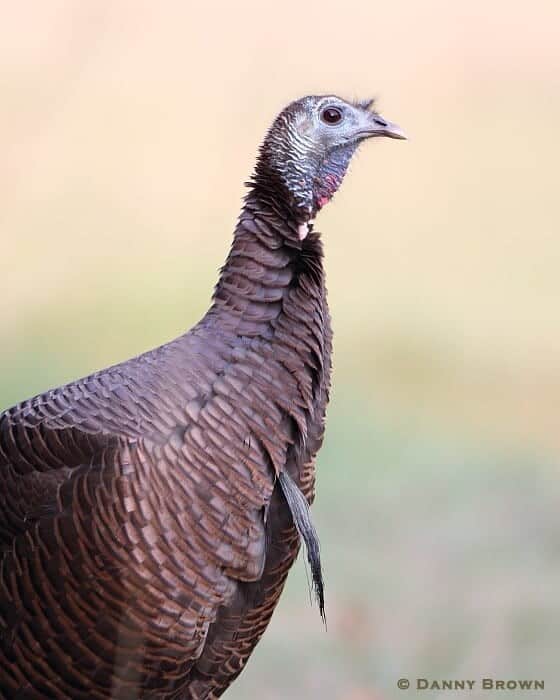
Now if you are a seasoned turkey hunter, you know this is not true. New hunters may be surprised to find out that around 5-10% of hens have beards, and around 1% of hens have spurs. This is due to a genetic mutation in the female turkey embryo. These thin beards can reach around 7-8 inches in length. Bearded hens still breed and lay eggs. No studies indicate that having a beard decreases the chances of mating. Also, this mutation does not put the hen at a disadvantage from a survival standpoint. Therefore, females with beards or spurs have not been phased out. These birds are legal to shoot in states with a “bearded bird” spring season.
8| Spring Hunting Is The Best
Spring hunting is a lot more popular than the fall. Many hunters have success in the spring and can struggle in the fall. Although, if the turkeys are there then it can certainly be great hunting, regardless of which season you pick. Although this is one of the true turkey hunting myths. If you ask the average hunter they will agree that the most success comes from the spring season. We also see from the harvest numbers that more turkeys are taken during the spring. This could be due to a higher success rate or a higher number of hunters.
9| You Need Expensive Camouflage
The first thing a big company will tell you about turkey hunting is how good their eyesight is. They say things like “you HAVE to have THIS particular set of camouflage, and need to get THIS special pattern”. Yeah, that sounds great but premium camouflage can get really expensive really fast. Turkeys do have really good vision, but you do not need the top of the line camouflage to kill a turkey. Relatively cheap camouflage will do the trick just fine. The caveat is that you always (no matter what you wear) need to control your movement. If you are getting stared down by a turkey, the wrong twitch will send them running.
10| You Can Not Call Fall Gobblers
Just like when we talked about fall toms strutting and gobbling in the fall, you can still call fall gobblers. You will need to change your strategy a bit in the fall if you want to call in a longbeard. During the spring, gobblers have hens on their mind. Because of this, we call like a hen. During the fall, toms are in bachelor groups, and are not normally very interested in hens. To call in a fall gobbler, you need to think (and sound) like a fall gobbler.
11| Calling Is Everything
No, it is not. Many turkey hunters take calling to an extreme. There are many strategists out there that say call call call, but sometimes the best call is silence. Not only are these hunters over calling, but instead of focusing on calling as much, they should focus on things like where to set up and which direction you expect birds to come from. Calling is a major component in the hunt, but it is not the only component.
12| Turkeys Will Not Cross Water
This is an old turkey hunting myth that is actually kind of silly. Turkeys will cross water on foot each and every day. Turkeys can actually swim, so even if they did not like water or would not cross on foot, they are birds, they can fly. If you hear of a hunter that claims that the turkeys on his property will not cross over a creek, then they should work on their calling skills.
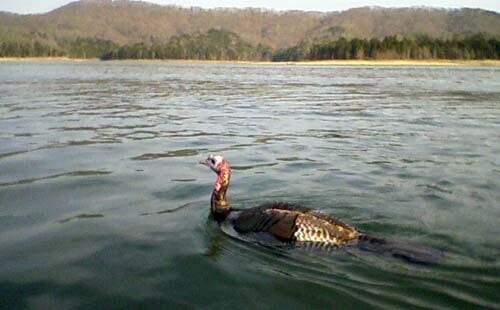
13| You Can Never Call Back A Spooked Bird
This is a very popular turkey hunting myth. Many hunters are convinced that when you spook a turkey, no hunter will ever be able to call that turkey back. This is not true. While the bird may or may not have learned something from that encounter, it is not over. There are some really good calls out there, and some very talented hunters. Most of the time other hunters cannot even tell the difference between a turkey and a call, and turkeys are not that critical of calls. Even if you did spook a turkey, they cannot rationalize that it was you that was calling and not another turkey. All they know is that they were coming to another calling turkey when they saw a predator and ran the other way.
14| Overcalling Causes Turkeys To Stay Roosted
If you put a gobbler to bed and set up on the roost the next morning, you want to make sure that you either do not overcall and that you are well out of sight of the roost. If you are within the eyesight of the roost and are calling, a turkey will expect to see another turkey. So stay back and make a few calls and wait for them to come down. Then either call them to you or make your approach.
15| Scattered Gobbler Groups Will Not Regroup For Weeks
Sometimes fall gobblers will take their time to regroup after being flushed, but most of the time it will only take a couple days max. Most gobblers will regroup in a matter of hours, if not sooner. After they scatter, they begin to gobble at each other until everyone is found. This can be an opportunity for you to gobble a big beard in. With around five or so toms gobbling to find each other, it may be easier to gobble one in like this. Instead of trying to gobble in an entire bachelor group.

16| We Have Always Hunted Turkey In The Spring
For younger turkey hunters, you may not know that spring turkey season is not that old of a tradition. Only in the 1980s was the spring season legalized. It had been closed since the 1870s on account of the declining numbers of turkeys in America. Conservation has done its job though, and turkey populations are doing great. We went from about 30,000 birds in the early 1900s, to over 7,000,000 turkeys in the United States today.
17| Gobblers Are The Only Challenge
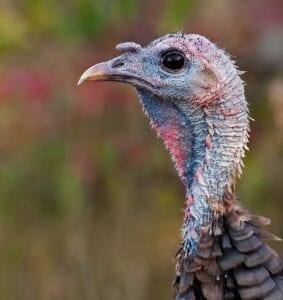
Just like in deer hunting, an old and wise female can be just as rewarding as an old and large male. Outsmarting a two-year-old bird is a challenge, but taking out the smartest and oldest turkeys can be even more challenging, and sometimes the smartest and oldest turkey is not a gobbler. So, do not be afraid to give hens a chance during the fall season.
18| Turkeys Roost In The Same Tree Every Night
Turkeys may stay in a general area for roost, but will not stay in the same tree all the time. So if you know that turkeys roost in a certain tree, do not be surprised if you go back to that tree one morning to see it empty. Search the general area and you may locate the same group of turkeys again.
19| Turkeys Will Not Cross Fences
This is one of the more silly turkey hunting myths, fences are no obstacle for a turkey. If it is a barbed-wire fence then they may just walk right through it, and anything else they can fly over. Though sometimes turkeys can be stubborn, so if you have a buddy that claims turkeys do not cross fences, they should work on their calling skills.
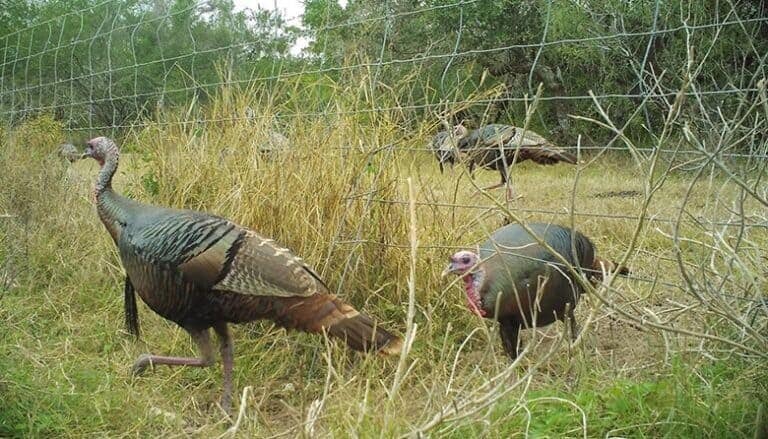
20| Turkey Is Tough And Gamey
Wild turkey is one of the most delicious meats you can get, and possibly my favorite. How you clean a turkey will affect how it tastes (as with any animal). So make sure you process the animal in a clean and quick manner. There are also many great recipes online for turkey breast. If you have never skinned a turkey or cooked wild turkey, search for a quick video and a recipe, you will not regret it.
Thanks for reading my article about turkey hunting myths. I hope you enjoyed it and learned something you didn’t already know. If you like my content subscribe for my weekly update. If you have any other questions about turkey hunting myths or just want to connect, feel free to email me at Patrick.Long@omegaoutdoors.net.
